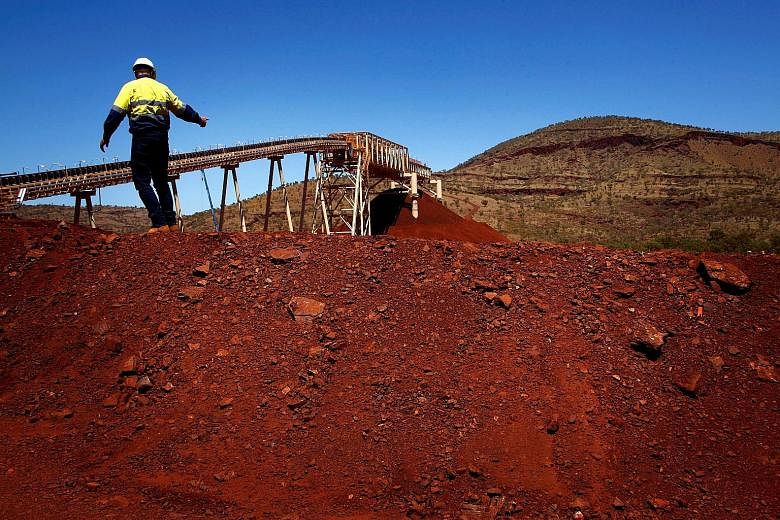SYDNEY • Australia boasted its first trade surplus in almost three years in November as surging commodity prices boosted export earnings beyond all expectations, a much-needed windfall that all but rules out the risk of recession for the resource- rich nation.
Yesterday's data from the Australian Bureau of Statistics showed a trade surplus of A$1.24 billion (S$1.3 billion) in November, far above forecasts of a A$500 million deficit. Exports jumped by 8.4 per cent, or a whopping A$2.3 billion, to top A$30 billion for the first time.
Coal, iron ore and rural exports all enjoyed double-digit gains, while imports were unchanged on the month. The country was also shipping more products, particularly iron ore and liquefied natural gas, which made it very likely net exports would add to economic growth in the fourth quarter after being a drag the previous quarter. That, in turn, meant gross domestic product (GDP) should have rebounded after a shock 0.5 per cent drop in the third quarter.
"It almost certainly averts the risk of recession," said CBA senior economist Michael Workman. "GDP could easily grow 0.6 to 0.7 per cent, and quite possibly more."
November's data ended a 31- month run of deficits and is likely just a taste of more to come as prices for many key resources remain strong on the back of sustained Chinese demand. The Reserve Bank of Australia's index of commodity prices, which mirrors the country's resource mix, surged 11.8 per cent in November and 9.3 per cent in December. That left the index up almost 40 per cent on a year earlier, while bulk commodities alone were 85 per cent higher.
Analysts have already been busy revising upwards profits for the resource sector and expect BHP Billiton, for instance, to report a 35-40 per cent rise in earnings when it releases half-year results next month. BHP's stock has climbed 48 per cent in the past year while iron ore miner Fortescue has risen 216 per cent in the same period.
The stars have also aligned for the farm sector. Export volumes of wheat are set to be swelled by a bumper crop after the government raised its forecast for production during the 2016/17 season by more than 16 per cent. With harvesting under way, 2016/17 is shaping up as Australia's biggest wheat crop ever.
All of which has helped stabilise sentiment in the resource sector after a run of tough years, and should underpin jobs and wages going forward. It is also a windfall to tax revenues at a time when the government is struggling to maintain the country's triple-A credit rating in the face of interminable budget deficits. UBS economist Scott Haslem estimates a 10 per cent rise in non-rural commodity prices will benefit the budget by A$2.2 billion initially, rising to A$5.4 billion after one year.
REUTERS

